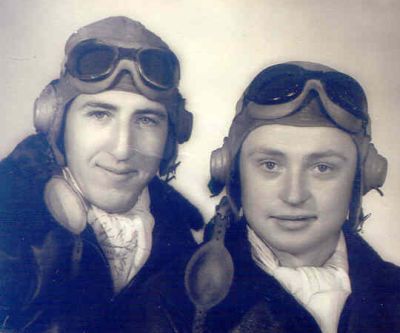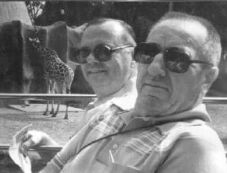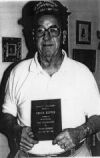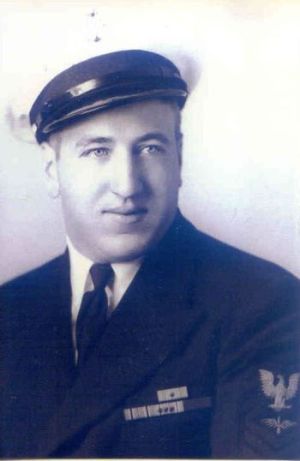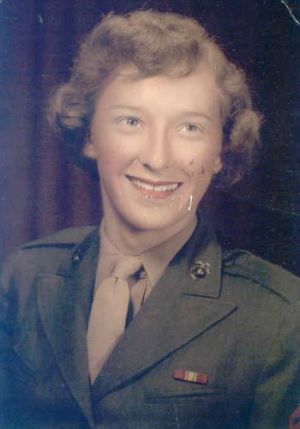|
Jan. 24th, 2001
I was born Oct. 24th, 1920 in Eagle Grove, Iowa. I graduated from Eagle
Grove High School in May of 1938 and on Feb. 7, 1939, I enlisted in the
Navy at Des Moines, Iowa and was sent to Great Lakes Naval Training
Station in Waubegan, IL. for 3 months training.
June, 1939: After completion of Boot Camp training I was sent to
Bremerton Navy Overhaul Base to report aboard the USS Salt Lake City
CA25 Heavy Cruiser. After completion of overhaul, Aug. 1939, we went
to Los Angeles Harbor. This was the Home Port for a group of Naval ships.
In Oct. 1939 our ship was notified that we were to be permanently assigned
to group of ships titled "Hawaiian Detachment". One Aircraft Carrier, USS
ENTERPRISE, 3 Heavy Cruisers and 7 Destroyers) to be sent to Pearl Harbor
for permanent duty. We left LA in a few days to carry out our assignment.
From Oct. 1939 until World War II started, we would go out to sea and hold
Aerial & Surface battle practice.
On Nov. 26, 1941 we entered Pearl Harbor for a regular routine of
refueling, taking on supplies and any repairs that may have existed.
After getting tied up to the dock (much to our sad surprise, we were
informed over the loud speaker that there would be no liberty and the
Captain and staff were going over to CINCPAC with the other 10 ship's
Officers to receive SEALED ORDERS (sealed orders not to be opened until
we were away from Port....for security reasons.). We provisioned and
refueled and departed at 1700 hours.
Our mission was to escort a Navy supply ship with military equipment
(aircraft parts, guns, army trucks and 400 Marines). They also took 16
Marine fighter planes from Ewa Marine Base aboard the Aircraft Carrier
USS ENTERPRISE to re-enforce Wake Island. We also got orders to set into
action BATTLE CONDITION II (which entails having all guns and fighting
equipment manned with enough men to go into action until General Quarters
is sounded, which will bring all equipment manned to full strength.
We got near Wake Island and the 16 Marine planes flew from Ewa Field to
Wake Island. The Supply ships went on in and we left for Pearl Harbor
on Dec. 7th, 1941.
Dec. 8, 1941. We were due to enter Pearl Harbor at approximately 08:30.
We received word at about 08:10 to stay away and we immediately left the
area. (We were low on fuel). Two of our SALT LAKE CITY Planes landed at
Pearl Harbor at approx. 14:30 and stayed at the Ford Island hangars.
We left Pearl Harbor on Dec. 9th, 1941 on a search mission Northeast &
Northwest and back into Pearl Harbor on Dec. 16, 1941. We left Pearl
Harbor on Feb. 1st, 1942 and made an attack on the Marshall Islands.
Next we attacked Wake Island and also attacked Marcus Island and bombarded
ships and shore installations.
In April of 1942 we left Pearl Harbor and proceeded north to rendezvous with
Jimmy Doolittle's group on the USS HORNET. This was the raid that was
presented in the movie..."30 Seconds over Tokyo". It was a great moral
builder for all our troops and the US.
In May, 1942 we operated in the New Caledonia Area. We then went to Brisbane,
Australia to operate with 4 other cruisers. Then we sent to Wellington,
New Zealand to escort the Marines to the Invasion of Guadalcanal. The day
before the invasion, we were transferred to the Aircraft Carrier Group of
the USS WASP. The other 4 cruisers we had been with got sunk that night.
About a week later were along the starboard (right) side of the Aircraft
Carrier USS WASP when she was hit by 3 submarine torpedoes. Later that
afternoon they had to abandon ship. She was sunk the following morning.
In Sept. 42, we were in the Battle of the Coral Sea, then in Oct. 42 were
in the Battle of Savo Islands and got hit by enemy cruiser fire and got the
"Forward Fire Room" burnt out.
I was transferred back to an anti-submarine Blimp Squadron at Lakehurst,
New Jersey. I served in this branch until I was discharged Sept. 12, 1945.
Our longest period of time at sea was down in the Coral Sea area. We
stayed out to sea for 88 days. Most of the crew thought we were never
going to get back to shore again. It was strange that during this time
there was less griping among the crew than on regular 3 or 4 week cruises
to sea.
During this extended period at sea, we had a Destroyer come alongside for
refueling. They ask if we could spare any beef since they had used the
same soup bone for 3 days. We had a larger supply of everything due to
the difference in the size of the two ships. Our Capt. had the bakers
make up a large batch of fresh bread for them. He also had the guy in
charge of the Commissary make up at least 20 gallons of ice cream. You
could watch the guys on the Destroyer gather around the cargo net as it
came across the wide distance over the two ships and lowered to their deck.
When they would see what was in the net each time you could see guys
running to tell the rest of the crew on duty what they were getting.
We were almost physic in figuring how they felt.
It was also almost unbelievable how a good percentage of the crew who
reminisced about what they were going to do when they go into port and
have liberty. Then after about 10 or 12 days of port life, they would
gradually start saying they were ready to go back to sea.
No one can explain how close the men were in a family way. When you were
at home in civilian life you went to a regular church. You also went to
different places with various friends and then the rest of the time was
being an active part of your family. When you were at sea for a long
period of time you were with just your crew every day and no one else.
Therefore you were in actuality closer to your shipmates than you had ever
been with your family. You came up on topside each morning to see nothing
but ocean and the other ships of your task force. When I visit California
I like to go down to the beach and truly... a sense of nostalgia comes
over me that is hard to explain.
I was married to Maxine Forbes (Mar. 8th, 1943) and had 3 daughters. I
lost my first wife to cancer. Friends use to try to find a wife for me
but I met and married "Wonder Woman" Barbara Burcham in 1987. She had
two sons.
I belong to the USS Salt Lake City Association, LMC [Last Man's Club]
Veterans of Pearl Harbor in Tulsa, OK. I retired from Douglas Aircraft in
Tulsa, OK.
#4 in Victor Division, May 30th, 1942
Picture from

 John M. Roberts, BM1c
John M. Roberts, BM1c
SLC Deck Logs, Feb. 1943
#7 in 1995 SLC Reunion Group Picture
|
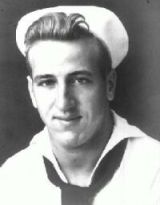
 Charles F. "Chuck" Kepper passed away on Nov. 26th, 2009.
Charles F. "Chuck" Kepper passed away on Nov. 26th, 2009.
